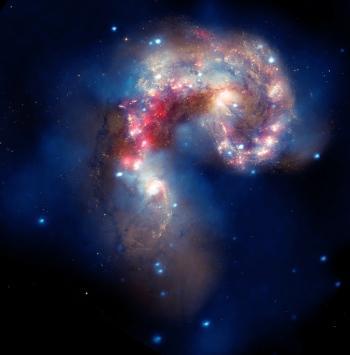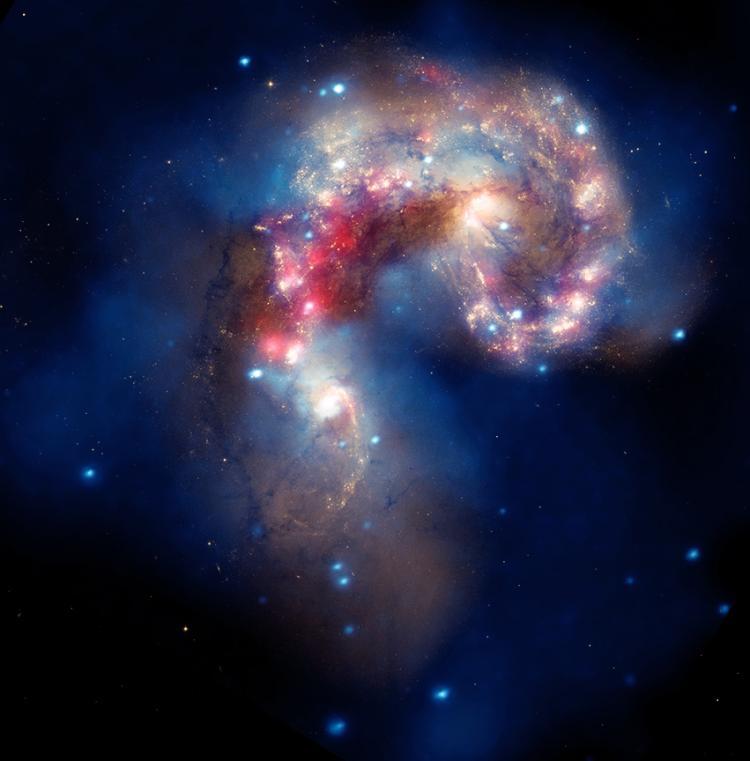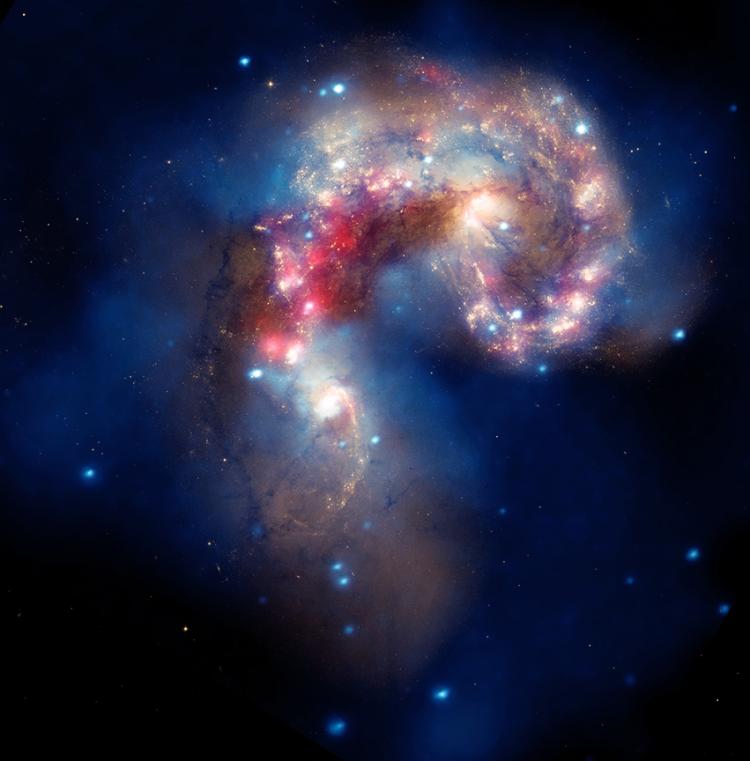NASA released a new image of two colliding galaxies, approximately 62 million light-years from earth, on Thursday.
The new image is composite of its three great space based observatories showing images of the Antennae Galaxies taken by the Hubble Space Telescope (gold), Spitzer Space Telescope (red), and the Chandra X-ray Telescope (blue) have been overlaid.
This spectacular cosmic collision started more than 100 million years ago. During that time, millions of stars have been formed. Some of the extremely large stars that were created as a result of the collision have already completed their life cycle and exploded as supernovae, or collapsed into a black hole.
The Chandra X-Ray telescope shows clouds of hot gas that have had the remnants of supernovae added to them, according to NASA. These huge explosions are rich in newly formed heavier elements that will spur further galactic evolution, and much of the new material will go on to form planets.
The extremely bright smaller points of light in the image are believed to be caused by matter that is being superheated as it falls into a black hole.
The infrared eye of Spitzer shows huge clouds of dust that are being heated by infant stars. The brightest regions are in the center were the two galaxies have overlapped the most, and new star formation is at its peak.
Hubble shows us older stars, they appear red in this image, while the yellow and white areas are star factories that existed in the galaxies before they began their cosmic dance.
The new image is composite of its three great space based observatories showing images of the Antennae Galaxies taken by the Hubble Space Telescope (gold), Spitzer Space Telescope (red), and the Chandra X-ray Telescope (blue) have been overlaid.
This spectacular cosmic collision started more than 100 million years ago. During that time, millions of stars have been formed. Some of the extremely large stars that were created as a result of the collision have already completed their life cycle and exploded as supernovae, or collapsed into a black hole.
The Chandra X-Ray telescope shows clouds of hot gas that have had the remnants of supernovae added to them, according to NASA. These huge explosions are rich in newly formed heavier elements that will spur further galactic evolution, and much of the new material will go on to form planets.
The extremely bright smaller points of light in the image are believed to be caused by matter that is being superheated as it falls into a black hole.
The infrared eye of Spitzer shows huge clouds of dust that are being heated by infant stars. The brightest regions are in the center were the two galaxies have overlapped the most, and new star formation is at its peak.
Hubble shows us older stars, they appear red in this image, while the yellow and white areas are star factories that existed in the galaxies before they began their cosmic dance.






